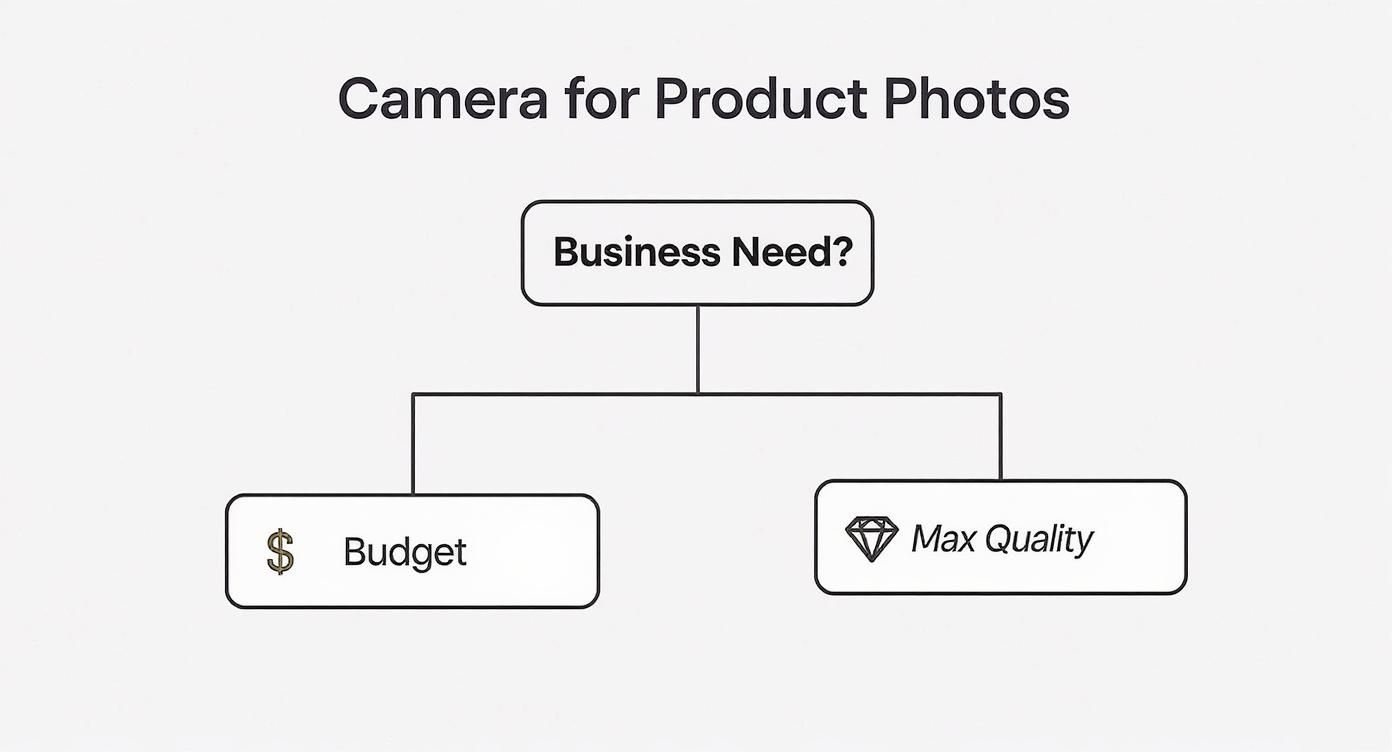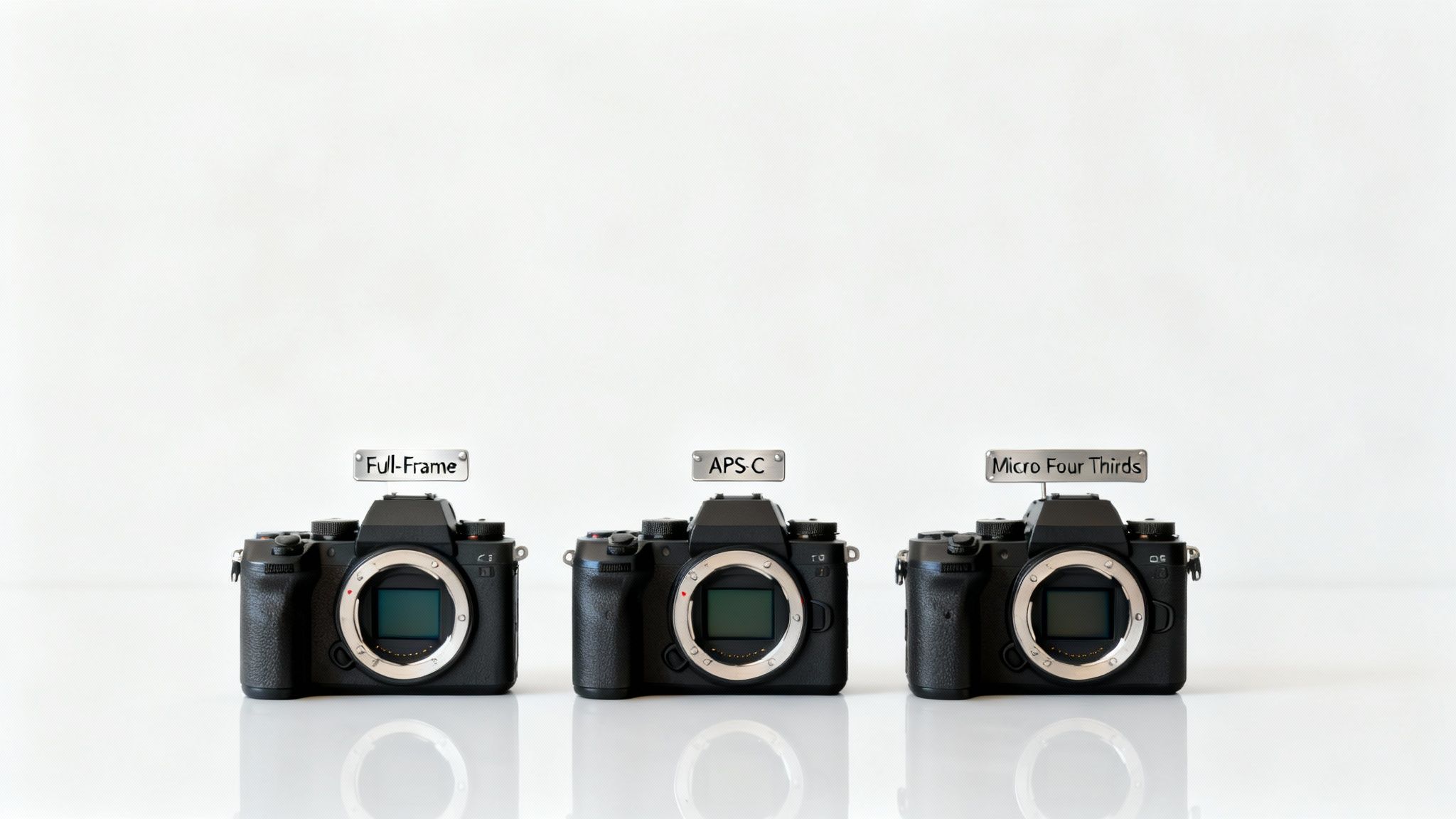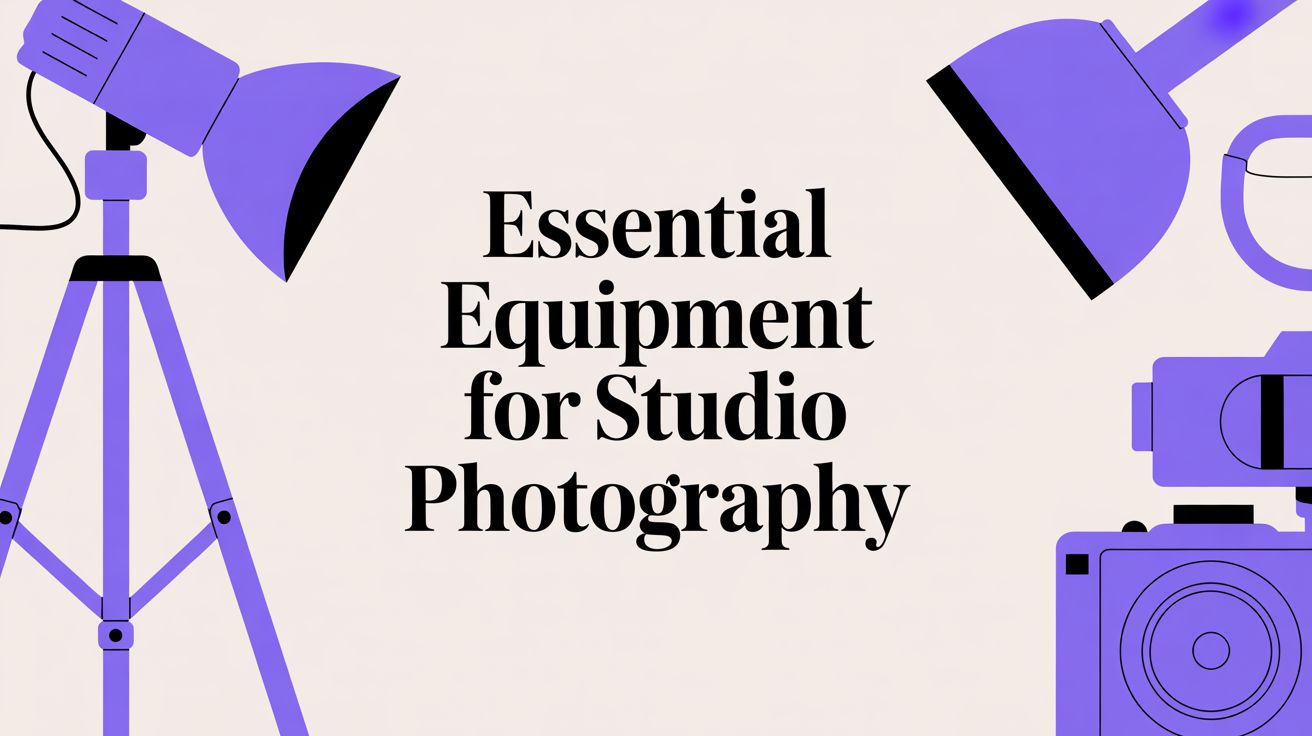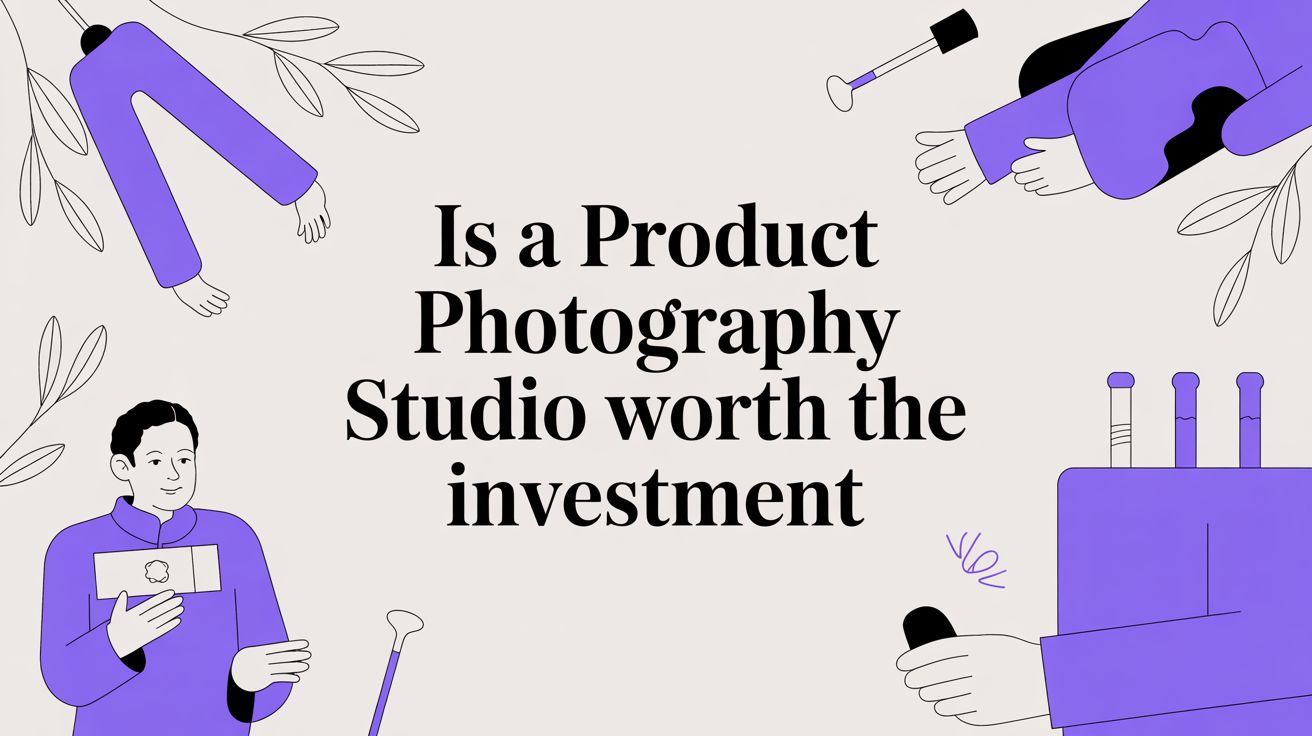How to Choose the Best Camera for Product Photography in 2024
Discover the best camera for product photography to elevate your e-commerce images. Compare sensors, lenses, and features to convert more shoppers.
How to start saving money
Lorem ipsum dolor sit amet, consectetur adipiscing elit lobortis arcu enim urna adipiscing praesent velit viverra sit semper lorem eu cursus vel hendrerit elementum morbi curabitur etiam nibh justo, lorem aliquet donec sed sit mi dignissim at ante massa mattis.
- Neque sodales ut etiam sit amet nisl purus non tellus orci ac auctor
- Adipiscing elit ut aliquam purus sit amet viverra suspendisse potent i
- Mauris commodo quis imperdiet massa tincidunt nunc pulvinar
- Adipiscing elit ut aliquam purus sit amet viverra suspendisse potenti
Why it is important to start saving
Vitae congue eu consequat ac felis placerat vestibulum lectus mauris ultrices cursus sit amet dictum sit amet justo donec enim diam porttitor lacus luctus accumsan tortor posuere praesent tristique magna sit amet purus gravida quis blandit turpis.

How much money should I save?
At risus viverra adipiscing at in tellus integer feugiat nisl pretium fusce id velit ut tortor sagittis orci a scelerisque purus semper eget at lectus urna duis convallis. porta nibh venenatis cras sed felis eget neque laoreet suspendisse interdum consectetur libero id faucibus nisl donec pretium vulputate sapien nec sagittis aliquam nunc lobortis mattis aliquam faucibus purus in.
- Neque sodales ut etiam sit amet nisl purus non tellus orci ac auctor dolor sit amet
- Adipiscing elit ut aliquam purus sit amet viverra suspendisse potenti
- Mauris commodo quis imperdiet massa tincidunt nunc pulvinar
- Adipiscing elit ut aliquam purus sit amet viverra suspendisse potenti
What percentage of my income should go to savings?
Nisi quis eleifend quam adipiscing vitae aliquet bibendum enim facilisis gravida neque. Velit euismod in pellentesque massa placerat volutpat lacus laoreet non curabitur gravida odio aenean sed adipiscing diam donec adipiscing tristique risus. amet est placerat imperdiet sed euismod nisi.
“Nisi quis eleifend quam adipiscing vitae aliquet bibendum enim facilisis gravida neque velit euismod in pellentesque massa placerat”
Do you have any comments? Share them with us on social media
Urna ut fermentum imperdiet lacus, elementum etiam maecenas libero nunc, suspendisse massa, nisl, elit curabitur feugiat in quis ut nibh enim in tristique aliquam sed vitae dui, dis adipiscing pharetra aliquam turpis turpis nibh rhoncus enim, pellentesque leo laoreet neque in sed bibendum fermentum suspendisse tempus non purus adipiscing suscipit fringilla adipiscing convallis dolor nulla fermentum facilisis ullamcorper ut vehicula tortor libero metus donec velit, tristique fermentum, dictum euismod diam scelerisque enim non pharetra tristique lectus habitant pharetra est id
When fashion brand Reformation needs to showcase the intricate fabric of a new dress, they don't reach for a smartphone. They rely on high-resolution, full-frame cameras to capture the details that justify a premium price. For most e-commerce brands, the best camera for product photography is a full-frame mirrorless camera with 24 to 50 megapixels, paired with a sharp prime or macro lens. This setup delivers the crisp, color-accurate images that convert browsers into buyers.
Your Quick Guide to the Best Product Photography Camera
Choosing the right camera is a foundational move for any fashion or e-commerce brand. Your product photos are the raw material for your entire content engine — from product pages to social media campaigns.
The better the initial shot, the more mileage you get. This is where platforms like Picjam elevate your strategy. By feeding it pristine source images, you can generate hundreds of on-model variations, turning a one-time gear purchase into a scalable content machine that saves thousands on future photoshoots.
Comparing Camera Types for E-commerce
You’ll generally choose between three camera types: DSLR, Mirrorless, and Medium Format. While all can produce great images, they differ in technology, workflow, and cost. Today, mirrorless cameras have become the industry standard, offering a modern feature set ideal for agile brands.
To get a clearer picture, let's break down how these cameras stack up for product photography.
DSLRs are a viable, budget-friendly option, while Medium Format is for ultra-high-end commercial jobs. For the vast majority of e-commerce brands, mirrorless cameras offer the most compelling package of features and value.
This decision tree helps visualize how to pick a camera based on your business goals.

The infographic confirms it: for most online brands, a full-frame mirrorless camera delivers the best return on investment. If you're just getting started, a guide to Amazon product photography can provide a solid foundation for platform-specific requirements.
Takeaway
Investing in the right camera streamlines content creation and saves money long-term. A full-frame mirrorless camera provides the perfect base for both classic e-commerce shots and AI-generated model imagery, empowering your brand to create a massive volume of marketing assets from a small set of high-quality photos.
Why a Full-Frame Sensor Elevates Your Brand's Look

The difference between a good product photo and a great one often comes down to the camera's sensor. Think of it as the camera's retina; a larger one captures more light and information, which is non-negotiable for clean, professional images that drive sales.
For fashion brands, this detail is everything. A larger full-frame sensor masterfully renders the subtle textures of fabrics like silk, denim, or wool.
This gives you better dynamic range, meaning it captures detail in the bright shimmer of a sequin and the deep shadows of a pleat in one shot. The result is a crisp image free of distracting digital graininess.
Why Full-Frame Is the E-commerce Standard
While smaller sensors like APS-C are capable, full-frame has become the benchmark for professional product photography for a few key reasons.
- Superior Low-Light Performance: Larger sensors perform better in a studio, handling strobes and continuous lights to produce cleaner files.
- Greater Detail and Depth: The ability to capture more raw data translates into richer colors and a realistic, three-dimensional look that makes products feel tangible.
- Professional Lens Options: The best and sharpest lenses are almost always designed for full-frame cameras, giving you access to top-tier glass.
A high-quality base image is your most valuable asset. It's the foundation for everything — from standard e-commerce shots to the AI-generated visuals created with Picjam. Skimping here compromises every piece of content down the line.
How to Find Your Resolution Sweet Spot
Resolution, measured in megapixels (MP), is about how much detail a camera captures. More isn't always better; the goal is balancing sharp detail with manageable file sizes.
For most e-commerce brands, the 24-50MP range is the sweet spot.
This provides more than enough detail for websites, social media, and small print ads. You can crop an image without a major quality drop, all while keeping file sizes reasonable for your workflow. See our complete guide on essential equipment for studio photography.
The camera market reflects this focus on quality. Just 3 camera brands controlled 84% of the global market in 2023, showing how the industry relies on established manufacturers to advance the technology. You can learn more about the digital camera industry trends on gminsights.com.
Takeaway
Investing in a camera with a full-frame sensor and a 24 to 50 megapixel resolution is a strategic business decision. This combination delivers the detail and quality needed to make products look their best. This initial investment creates high-fidelity source images that serve as the perfect foundation for AI tools like Picjam to create diverse, on-model content.
How the Right Lens Makes Your Products Stand Out

Your camera body is only half the equation. The lens you choose truly brings your product's story to life, shaping the light and defining the sharpness of your final image.
Choosing the right lens is just as critical as selecting the best camera for product photography. A top-tier camera with a low-quality lens will still produce disappointing results.
For fashion brands, this choice directly impacts sales. A quality lens can capture the delicate weave of a sweater, creating a tangible experience for shoppers. That detail builds trust and reduces cart abandonment.
Why Prime Lenses Deliver Unmatched Clarity
Prime lenses have a fixed focal length, which is their greatest strength for product photography. Their simpler internal construction produces exceptionally sharp images with almost no distortion.
Consider a beauty brand like Glossier. Their minimalist aesthetic is built on sharp, clean imagery — a look best achieved with a high-quality prime lens that renders products with edge-to-edge clarity.
The go-to prime lenses for product shots are:
- 50mm Lens: Often called the "nifty fifty," this lens mimics the human eye's perspective and is a versatile starting point.
- 85mm or 100mm Lens: These longer lenses create a compressed, flattering look that beautifully isolates the product from its background.
How Macro Lenses Capture the Finest Details
When you need to get incredibly close, a macro lens is non-negotiable. These are engineered for extreme close-ups, letting you capture intricate details at a 1:1 magnification ratio.
For jewelry or beauty products, a macro lens is essential. A brand like Mejuri uses macro photography to showcase the fine craftsmanship of its rings and necklaces. A 100mm macro lens is a studio workhorse, delivering stunning detail from a comfortable working distance.
Understanding Focal Length and Distortion
Focal length (mm) affects both your field of view and perspective. A shorter focal length can introduce "barrel distortion," making straight lines appear curved — a disaster for product shots.
A longer focal length (85mm and above) compresses the background and produces a more accurate, flattering representation. This is why professionals stick to focal lengths of 50mm or longer. Learn more about perfecting your studio environment in our guide to a professional product photography set up.
Takeaway
For unparalleled sharpness, a 50mm prime lens is an excellent starting point. For brands selling products with fine details, a 100mm macro lens is a must. Investing in quality glass ensures your source images are flawless — the perfect raw material for both traditional e-commerce listings and scalable AI content creation with Picjam.
How Key Camera Features Boost E-commerce Sales

Beyond the sensor and lens, a few technical features separate amateur shots from professional e-commerce photos that convert. These aren't just specs; they are tools that determine if your product looks premium and trustworthy.
High-quality source material is the bedrock of any scalable content strategy. When you feed a platform like Picjam a clean, detail-rich image, its AI can generate hundreds of realistic on-model variations. Start with a poor photo, and you'll get flawed AI outputs, wasting time and money.
Here are the features that have the biggest impact on your final images.
Key Camera Features and Their E-commerce Impact
Each feature plays a direct role in creating images that build customer trust and reduce operational costs.
Why Dynamic Range Creates a Premium Feel
Dynamic range is a camera's ability to see detail in the brightest whites and darkest blacks simultaneously. This is crucial for shooting anything with reflective surfaces like jewelry or leather goods.
A camera with great dynamic range avoids "clipping," where bright spots blow out to pure white or dark areas crush into solid black. This ensures a customer can see every facet of a gemstone, making the product feel more tangible and valuable.
How Accurate Color Reduces Costly Returns
Nothing erodes customer trust faster than receiving a product in a completely different color than what was shown online. This is where color accuracy becomes a sales tool.
Brands like Everlane, known for their true-to-life colors, have built their reputation on this. They rely on cameras that get colors right straight out of the camera. Investing in a brand known for its color science, like Fujifilm or Canon, helps manage customer expectations and protect your bottom line.
How Modern Connectivity Streamlines Your Workflow
In a busy studio, efficiency is everything. Modern features like tethering — connecting your camera to a computer — are a must for a professional workflow. This setup lets you see images on a large monitor in real-time.
This instant feedback loop is priceless. You can immediately spot a soft focus or an uneven light that you'd miss on the camera's small screen, saving you from the headache of a reshoot. Choosing the best camera for product photography is also about picking features that save you time and money.
How to Match Your Camera Budget to Your Business Goals
Choosing a camera is a financial decision that will shape your brand's visual future. The right camera sets you up for years of high-quality content, while the wrong one can mean costly upgrades or subpar images.
The photography market, valued at USD 53.14 billion in 2024, is projected to hit nearly USD 71 billion by 2029. This signals that professional-grade equipment is now essential for any brand that wants to compete visually. You can dive deeper into these digital photography market trends on researchandmarkets.com.
Entry-Level Options (Under $1,000)
If you're starting out, cameras like the Canon EOS R50 or a used Sony a6600 can produce clean, sharp images. Their APS-C sensors perform well in a controlled studio lighting setup.
The trade-offs are in build quality, dynamic range, and lens selection. These cameras are a brilliant first step, but think of them as a stepping stone. For more on building out your first space, check out our guide on creating a product photography studio.
Mid-Range Workhorses ($1,000–$2,500)
This is the sweet spot for most growing e-commerce brands. Here, you get full-frame mirrorless cameras like the Sony a7 IV or the Fujifilm X-T5. The jump in image quality is significant, with pro features like dual card slots and advanced autofocus.
A brand like Allbirds, which built its reputation on the texture of natural materials, lives in this tier. The incredible detail from a mid-range camera lets them show off every subtle weave, justifying their premium price to shoppers.
Professional-Grade Power ($2,500+)
Cameras in this tier, like the Sony a7R V or Canon EOS R5, are built for high-volume, high-stakes commercial work. They offer ultra-high resolution (45MP and up), incredible autofocus, and rugged bodies designed for busy studios.
For brands where image quality is the market position — think luxury watches or high fashion — it’s a smart investment. The ability to capture flawless detail for massive campaigns is non-negotiable.
Takeaway
For most growing e-commerce businesses, a mid-range mirrorless camera ($1,000–$2,500) hits the perfect balance of quality and long-term value. The smartest move is pairing that hardware with an AI content platform like Picjam. This strategy transforms a one-time purchase into a scalable system that dramatically cuts ongoing photography costs by up to 80%.
Takeaway: Your Next Moves for Better Product Photos
Let's break it down into 3 immediate actions.
Commit to a full-frame mirrorless camera. It’s the best way to future-proof your brand’s visual quality and is the standard for a reason. Don't get bogged down by features — focus on a camera body that gives you clean, detail-rich files.
Master a single 50-100mm prime or macro lens. This is your ticket to clean, distortion-free photography. Learning to shoot with one excellent lens is far more valuable than owning a bag of mediocre ones.
Scale content with AI. Once you have a library of perfect product shots, plug them into an AI content platform like Picjam. This lets you generate all the diverse, on-model lifestyle content you need without the endless cycle of expensive photoshoots.
The product photography services market is booming because brands need more content than ever, with forecasts showing a jump from USD 0.78 billion in 2024 to USD 1.78 billion by 2033. Discover more insights about the product photography market on businessresearchinsights.com. AI helps brands meet this demand while controlling costs.
After investing in the right camera, it's critical to follow the official Amazon image requirements and best practices to ensure your photos are compliant and ready to perform.
Ready to see what this looks like for your budget? Use our savings calculator to compare your current photography costs with an AI-powered workflow.
Questions We Hear All The Time
Let's cut through the noise. Here are the straight answers to the questions we get asked most by brands trying to invest confidently in their e-commerce imagery.
Mirrorless or DSLR: Which Is Better for Product Shoots?
For product photography today, mirrorless is the clear winner. They are lighter, more compact, and their electronic viewfinders are a game-changer. You get a live preview of your exposure before you press the shutter.
That "what you see is what you get" capability saves a ton of time by cutting down on test shots. While a good DSLR can still work, all the real innovation is happening in the mirrorless world, making it a smarter, more future-proof investment.
How Many Megapixels Do I Really Need for E-commerce?
You can relax. For anything online, a camera in the 24 to 30 megapixel range is the sweet spot. This gives you more than enough resolution for sharp product pages and allows you to crop without losing detail.
Higher megapixel counts — 45MP and up — are for brands printing massive billboards. For your e-commerce store, the 24-30MP range is a perfect balance of amazing detail and manageable file sizes. That efficiency is crucial for working with AI tools, where smaller source files mean faster processing and real savings.
Can I Just Use My Smartphone for Professional Shots?
Modern smartphone cameras are phenomenal, but they are not a replacement for a dedicated camera for pro-level product shots. Their tiny sensors cannot handle the dynamic range needed to show off rich fabric textures or the sparkle of jewelry.
Plus, the fixed wide-angle lenses on phones can subtly distort your products. A smartphone is great for authentic, behind-the-scenes social content. But for the hero images on your product pages that drive sales, a dedicated camera with a proper sensor and interchangeable lenses wins every time.
"A founder I spoke with at a DTC accessories brand put it best: 'Our phone gets us likes, but our Sony gets us sales.' That’s the bottom line. The initial investment in proper gear pays for itself by creating assets that actually convert shoppers."
These are the exact high-quality images you can feed into a platform like Picjam. It takes that professional quality and multiplies it, generating hundreds of on-model variations that blend top-tier photography with the smart economics of AI.
Ready to see how a small investment in quality source images can transform your content budget? Use the Picjam savings calculator to compare your current photography costs with an AI-powered workflow.
Picjam team
Pellentesque leo laoreet neque in sed bibendum fermentum suspendisse tempus non purus adipiscing suscipit fringilla adipiscing convallis dolor nulla fermentum facilisis ullamcorper ut vehicula tortor lib.



